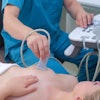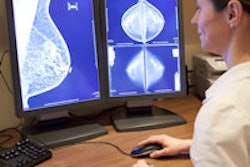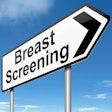Dear AuntMinnie Member,
The American Cancer Society (ACS) today raised to 45 its recommended age at which women should begin breast screening. The group said the move reflects a more nuanced look at how cancer risk changes with age -- but it could also be seen as a setback to proponents of early mammography.
In announcing the move, ACS said its review of literature indicates that it's better to look at breast cancer risk in five-year increments, rather than the 10-year bands that have dominated the debate for decades. Women ages 45 to 49 have a risk of breast cancer that's closer to the risk level for women in their early 50s, rather than women in their early 40s, the group said.
But the political ramifications of the switch could be far-reaching. For years ACS has stood shoulder to shoulder with groups such as the American College of Radiology in fighting pressure to raise the breast screening age to 50. Mammography's skeptics may cast the society's move as a validation of their position -- and push ACS to raise the age even higher.
There is also the chance that the new guidelines could further confuse women already bewildered by the conflicting array of recommendations and research studies on mammography's effectiveness. While ACS may be hoping to clarify the debate over breast screening, this week's move will most likely just make it murkier.
Click here to read more about this important development, or visit our Women's Imaging Community.
Should CT lung screening start earlier?
While debate rages over when to start breast screening, discussion is also percolating over the best time to begin CT lung cancer screening.
Up to now, imaging experts and public health authorities have focused on screening current and former smokers who smoked for at least 30 pack-years. However, new data indicate that a more tailored approach might be better.
Researchers from the U.S. National Cancer Institute analyzed cancer incidence rates from a big screening trial and found that current smokers with 20- to 29-pack-year histories actually had higher risk than people who had smoked beyond the 30-pack-year threshold but had quit.
The research confirms what we already know about smoking; namely, that risk drops dramatically when someone quits, regardless of how long they smoked. Is a guideline revision in order here as well?
Read more by clicking here, or visit our CT Community at ct.auntminnie.com.
More ICD-10 coding
Finally, we continue our series on the conversion to ICD-10 coding with an article on documentation for fractures. Check it out by clicking here.



















